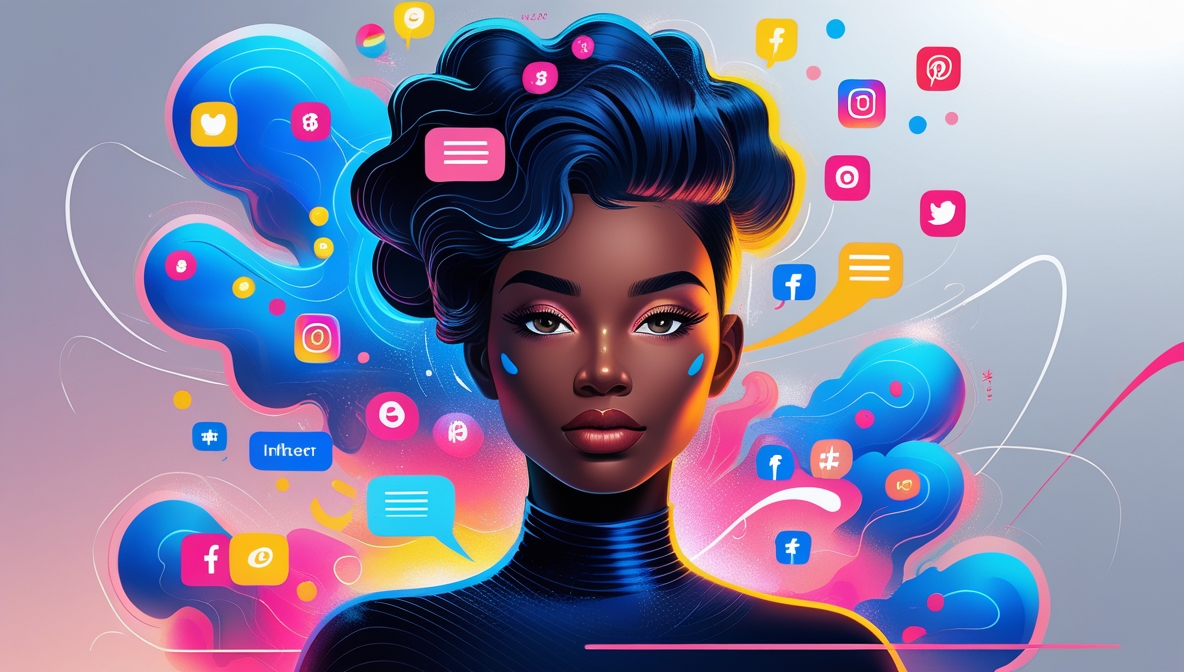Influencer marketing has transformed from celebrity endorsements to a structured industry with measurable impact. Brands no longer rely solely on A-list figures; they now collaborate with niche voices that command trust and engagement. The next phase will see deeper integration with technology, changing consumer expectations, and stricter regulations shaping strategies.
The Early Days: Celebrity Endorsements and Social Proof
Marketing through influential figures isn’t new. In the early days, television commercials and magazine ads featured celebrities endorsing products. Consumers associated their favorite actors, athletes, and musicians with quality and aspiration.
Social media platforms changed this dynamic by allowing everyday people to build loyal followings. The rise of YouTube, Instagram, and later TikTok created a shift from polished advertising to personal storytelling.
The Boom of Influencer Marketing
As brands recognized the effectiveness of authentic voices, influencer marketing became a structured strategy. Key developments included:
- Micro-Influencers Taking Over – Audiences trusted influencers with smaller, highly engaged followings more than celebrities.
- Data-Driven Decisions – Brands analyzed metrics beyond likes and comments, focusing on conversions and engagement rates.
- Long-Term Partnerships – Companies moved from one-off sponsored posts to ambassador programs for sustained impact.
- Authenticity Over Production Value – Raw, unfiltered content often outperformed professionally shot advertisements.
The Present Landscape: A Saturated Market
With influencers in every niche, standing out requires more than follower count. Brands and creators face new challenges:
- Fake Engagement and Bots – Followers can be bought, and fake interactions dilute marketing effectiveness.
- Ad Fatigue – Audiences recognize sponsored content and may tune out promotional messages.
- Regulatory Oversight – Governments enforce stricter disclosure rules to ensure transparency.
- Shifting Algorithms – Platforms change content reach unpredictably, impacting influencer visibility.
What’s Next for Influencer Marketing?
The next phase will be shaped by deeper audience relationships, emerging technologies, and a shift toward value-driven content.
1. AI-Generated Influencers and Virtual Personas
Brands are already experimenting with virtual influencers—digital characters created with artificial intelligence. These influencers don’t have scheduling conflicts, scandals, or personal biases. Lil Miquela, a virtual influencer with millions of followers, has collaborated with global brands. Expect companies to invest in AI-generated personalities tailored to their brand identity.
2. Decentralization Through Web3 and Blockchain
Web3 technology is shifting control back to creators. Blockchain-powered platforms allow influencers to monetize content without relying on social media algorithms. Fans can support creators directly through NFTs, exclusive memberships, and decentralized platforms, reducing dependence on ad revenue.
3. Interactive and Community-Driven Content
Audiences crave engagement beyond passive consumption. Influencers will foster stronger communities through:
- Private Membership Groups – Platforms like Discord and Telegram offer direct interaction.
- Co-Creation with Followers – Polls, interactive stories, and user-generated content increase participation.
- Live Shopping Experiences – Streaming e-commerce events allow real-time product demonstrations and instant purchases.
4. Niche Specialization Over Mass Appeal
Broad-reach influencers face declining trust, leading brands to seek hyper-specialized creators. A micro-influencer with 10,000 engaged followers in a specific field can outperform a celebrity endorsement in terms of conversions. This shift favors deep expertise over general popularity.
5. Augmented Reality (AR) and Virtual Reality (VR) Experiences
AR filters and VR activations will create immersive influencer content. Consumers will try products virtually before purchasing, reducing uncertainty and boosting confidence in influencer recommendations. Beauty brands already use AR to let customers test shades before buying, a trend set to expand across industries.
6. Ethical and Transparent Partnerships
Consumers demand authenticity and ethical business practices. Future influencer collaborations will emphasize:
- Sustainable Brand Alignments – Influencers will partner with companies that share their values.
- Clearer Sponsorship Disclosures – Regulatory bodies will enforce stricter ad labeling to prevent misleading promotions.
- Real Consumer Advocates Over Paid Promoters – Organic testimonials will hold more weight than scripted endorsements.
7. Voice Search and AI-Powered Recommendations
As voice search becomes standard, influencers will optimize content for audio-based platforms. AI will analyze user behavior to suggest personalized recommendations, changing how consumers discover influencer content.
8. Long-Form Content Making a Comeback
While short-form videos dominate, long-form content is regaining traction. Podcasts, deep-dive YouTube videos, and detailed blog posts provide in-depth insights that short clips cannot. Influencers who offer substance over virality will see sustained engagement.
Final Thoughts
Influencer marketing is no longer just about reach—it’s about impact, trust, and value. As technology and consumer expectations evolve, brands and creators must adapt to remain relevant. The future belongs to those who build genuine connections, embrace innovation, and prioritize meaningful interactions over fleeting trends.

No Responses